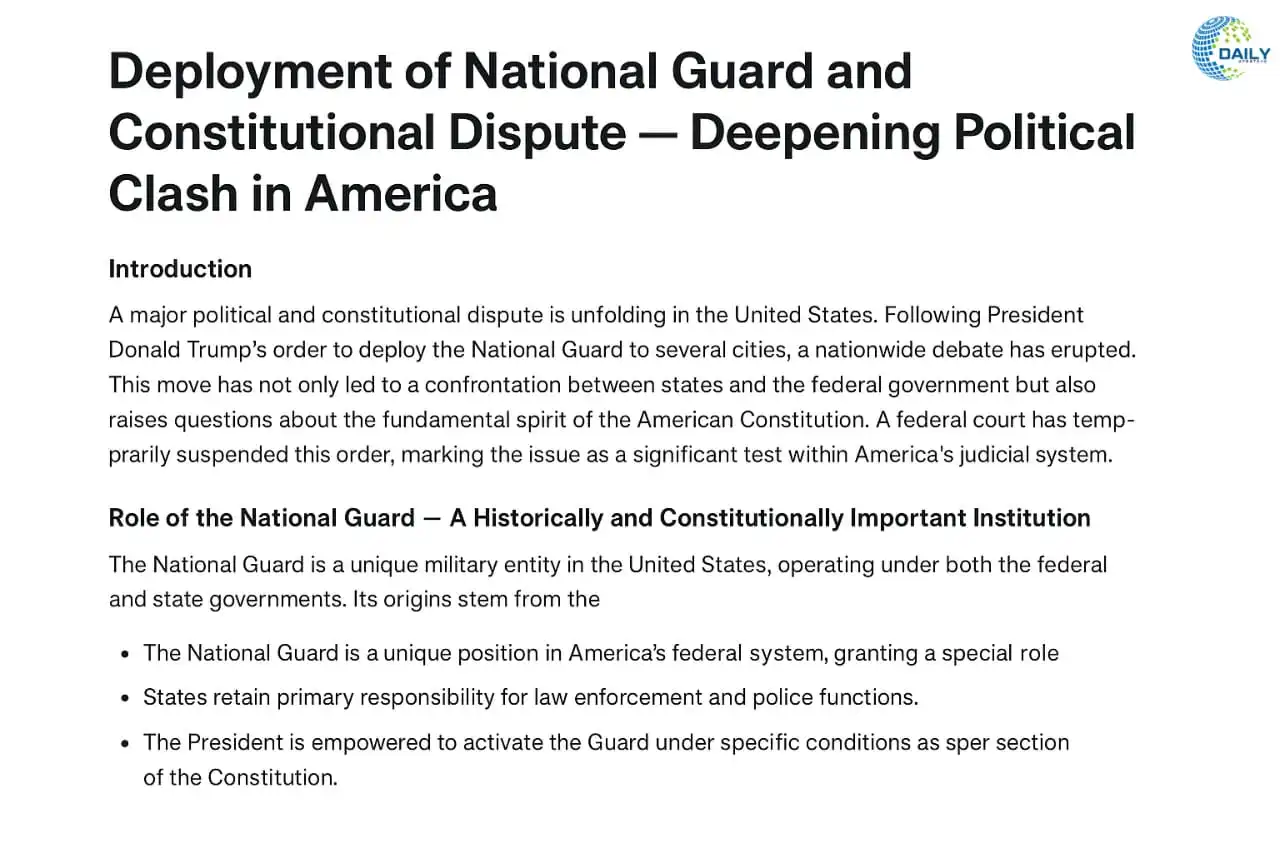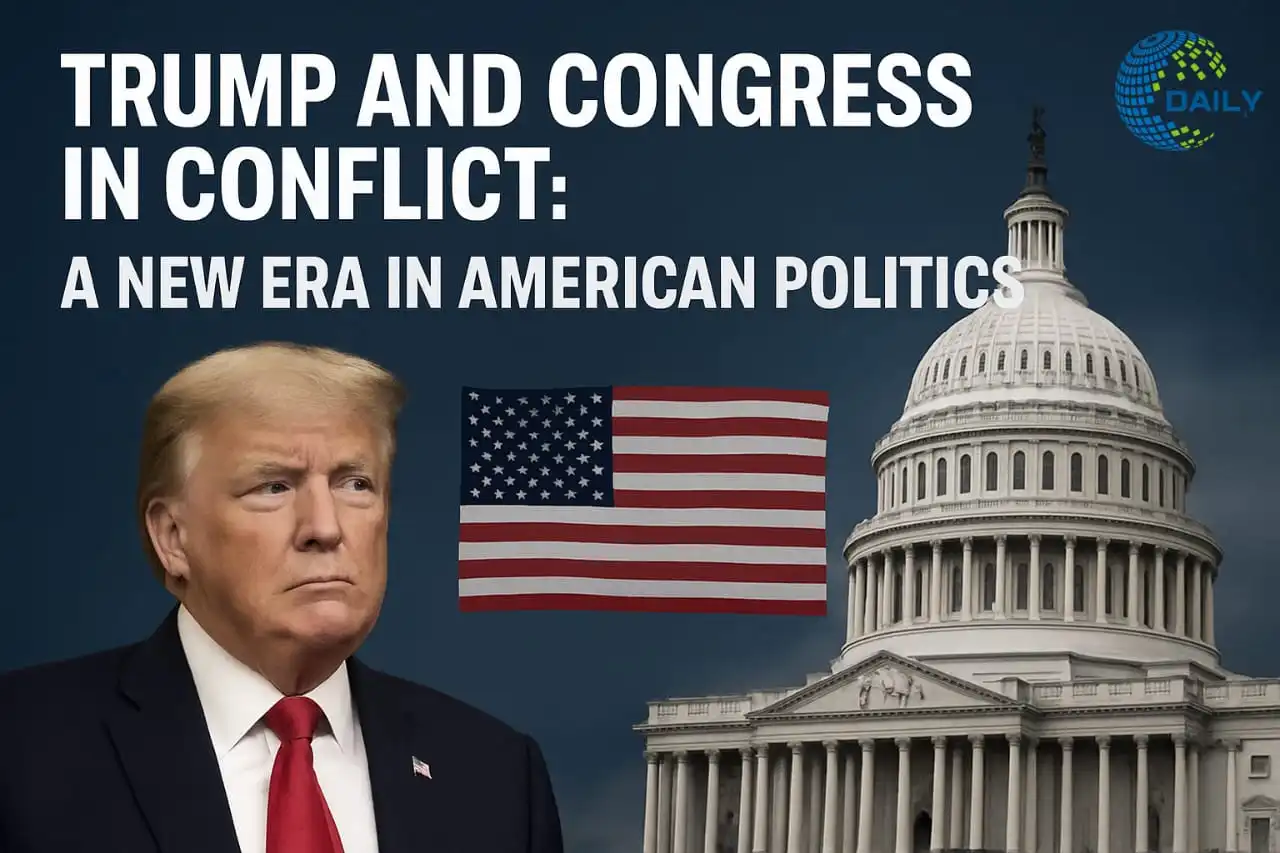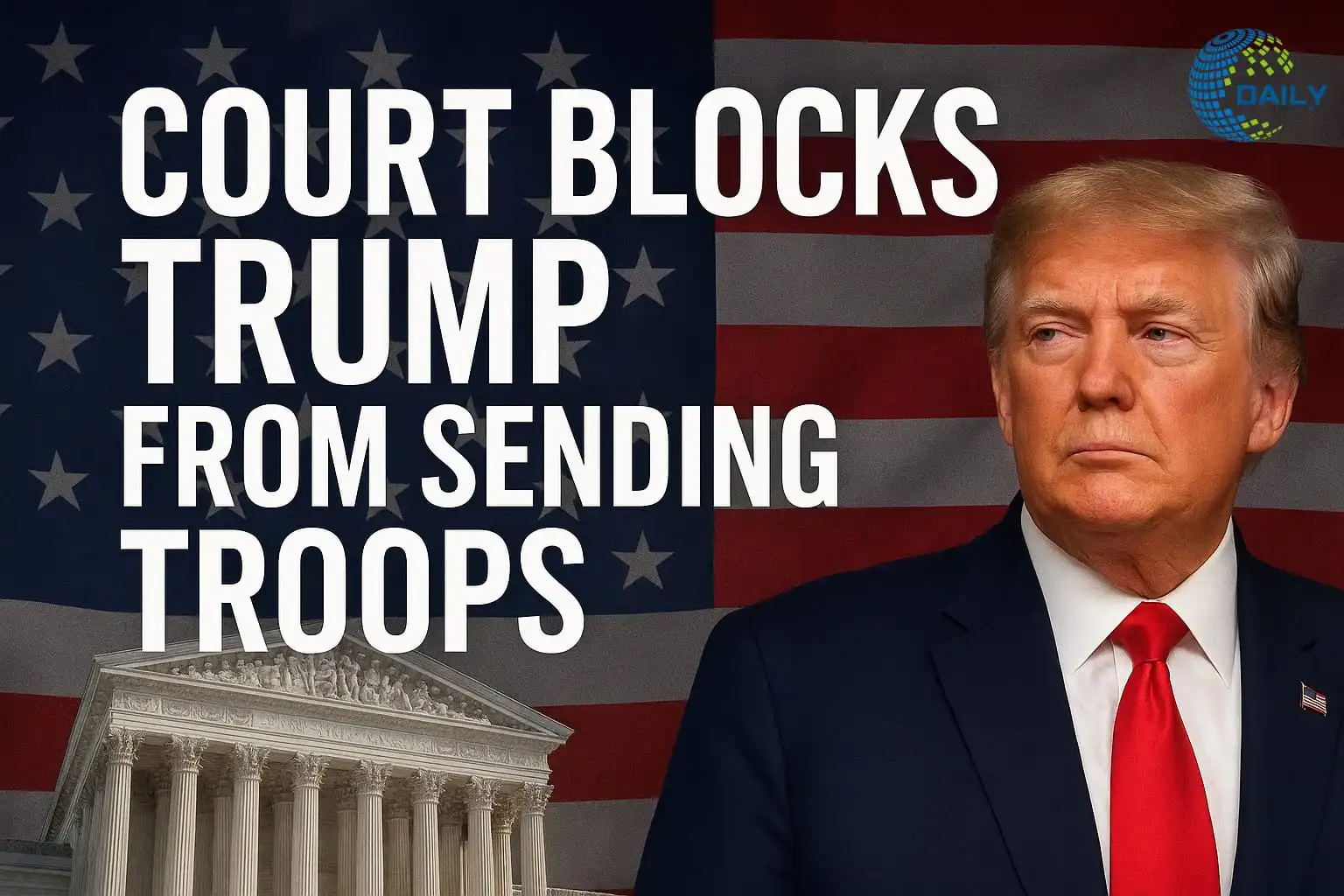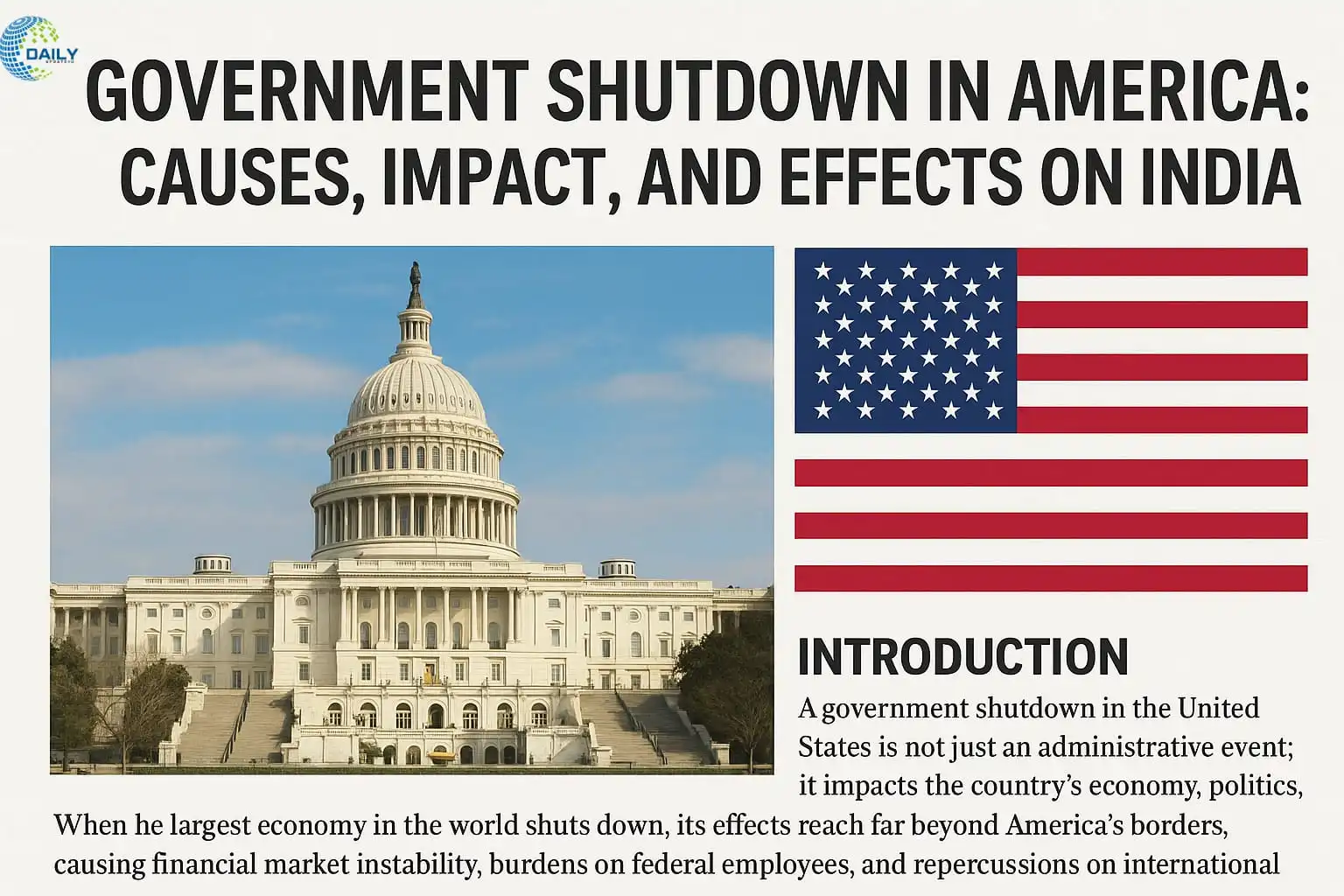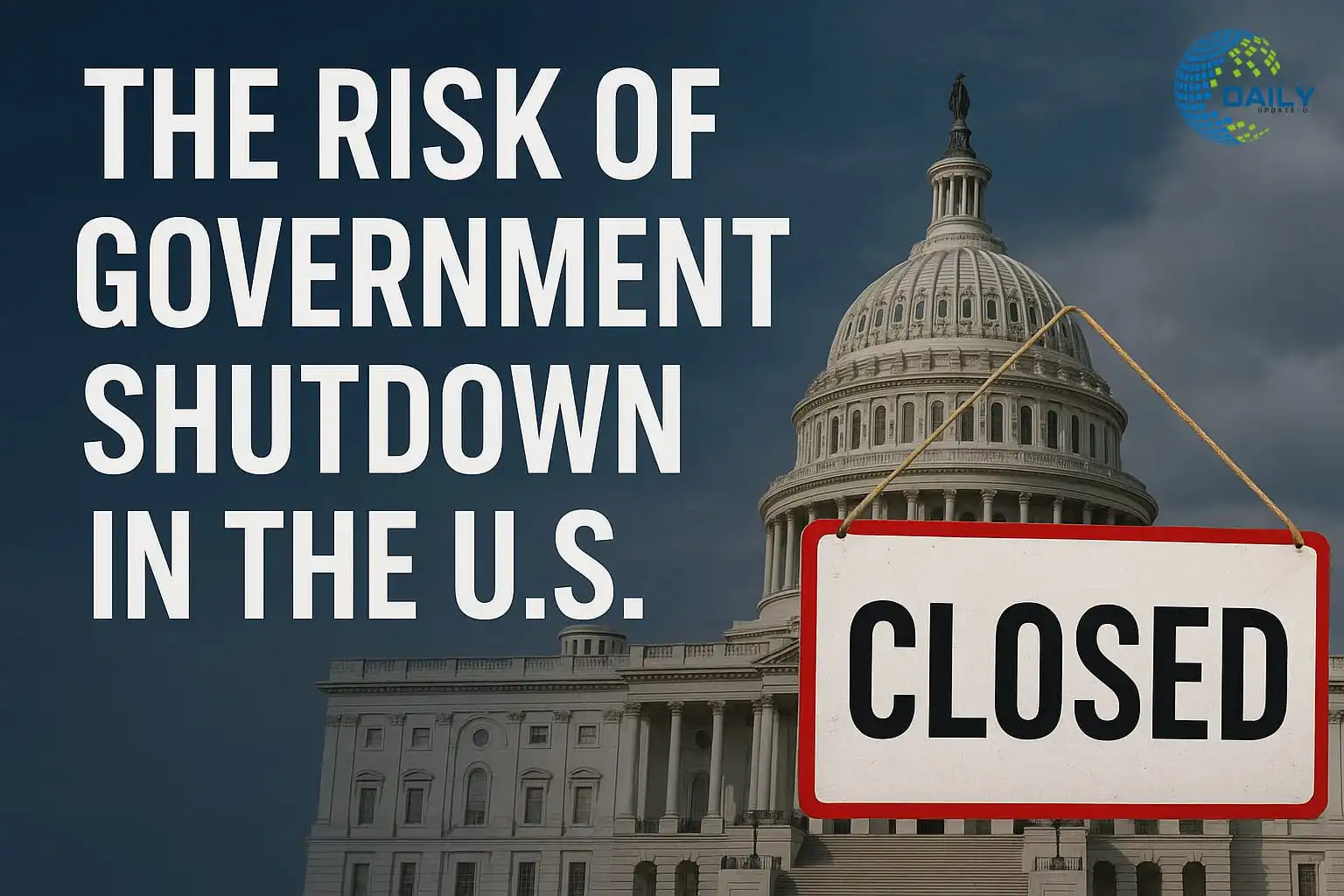
The United States is considered one of the world’s largest democratic and economic powers. Its administrative structure is based on a federal system. Whenever the budget required to run the federal government is not passed on time, a government shutdown occurs.
Government Shutdown in the U.S.: Causes, Effects & Fixes
A government shutdown means that many government agencies, departments, and services are temporarily shut down because they lack funds to pay employees and maintain regular operations. This situation has a profound impact on ordinary citizens, the economy, and even global financial markets.
➡In this blog, we will understand in detail
What a government shutdown is,
Why does it frequently occur in the United States?
its political and economic causes,
its impact on ordinary citizens, businesses, education, and globally,
and possible solutions to avoid it.
➡ Definition of a Government Shutdown in the United States
The US Constitution ensures that federal government spending can only occur if Congress authorizes it.
Every year, Congress must pass Appropriations Bills.
If these bills are not passed by the deadline, the government runs out of funds to pay agencies and employees.
As a result, a shutdown is imposed.
In simple terms,
Government shutdown = when the government’s treasury is open, but its use is legally prohibited.
➡ Historical Perspective of Government Shutdowns
Shutdowns are not new in the United States. Since 1976, the federal government has been partially or completely shut down several times.
✅Some Major Examples
In 1995–96 (during Bill Clinton’s tenure), the shutdown lasted for approximately 21 days. The reason: a dispute over reducing the budget deficit.
In 2013 (under Barack Obama), disagreements over the Affordable Care Act (Obamacare) led to a 16-day shutdown.
In 2018–19 (under Donald Trump), the longest shutdown in US history (35 days) occurred when funding for the Mexican border wall could not be agreed upon.
These events clearly demonstrate that shutdowns are often the result of political conflict.
➡ Why is there a threat of a shutdown in the current situation?
The same problem is being repeated in the current situation of 2025.
Congress must pass a new budget by September 30, the funding deadline.
The main disputes center on health insurance subsidies, the Medicaid program, education funding, and defense spending.
The political climate is fraught with President Donald Trump and Republican leaders leaning toward spending cuts, while Democrats want more investment in social programs.
This conflict is increasing the risk of a government shutdown.
➡ Types of Government Shutdowns
Shutdowns in the United States can be of two types:
✅ Partial Shutdown
When certain departments are closed due to a lack of funding.
✅ Full Shutdown
When all non-essential government departments cease operations.
➡Which sectors are affected?
✅ Government Employees
Millions of employees are placed on furlough, meaning leave without pay.
Essential workers (such as police, fire department, and air traffic controllers) continue to work but receive their salaries later.
✅ Ordinary Citizens
Passport and visa processing slows down.
Taxpayers face delays in receiving tax refunds.
Technical problems with programs like Social Security and Medicare.
✅Economy
Consumer spending decreases because employees don’t receive salaries.
Investors begin withdrawing money from the stock market.
International investor confidence is shaken.
✅Education and Research
Funding to universities may be halted.
Scientific research projects are disrupted.
✅Tourism and Transportation
National parks, museums, etc., are closed.
A shortage of security personnel at airports impacts flights.
✅Political Reasons
Partisan politics is the most common cause of government shutdowns.
Lack of agreement between the president and the opposition party.
Radical factions persist in their issues and use the budget as a weapon.
Shutdowns have come to be seen as a political bargaining tool.
➡Economic Impact on the US and the World
Impact on GDP: A prolonged shutdown could reduce US GDP growth.
Financial Markets: Indexes like the Dow Jones and NASDAQ could fall.
Dollar Weakening: The dollar could weaken globally.
International Impact: Institutions like the IMF and World Bank question America’s political stability.
Impact on other countries, including India: Indian IT companies and the stock market are also affected.
➡Psychological and Social Impact on the Common Citizens
Lack of salaries causes mental stress and depression for employees.
Difficulty meeting the family’s daily needs.
Unemployment and insecurity increase.
➡What could be the solution?
Bipartisan Cooperation: Both parties should come together to agree on the budget.
Automatic Continuing Resolutions: If the budget is not passed on time, spending should automatically continue at the previous level.
Avoid turning social programs into political weapons: Avoid politicizing public programs.
Maintaining international trust: The United States must demonstrate globally that its political system is stable and responsible.
➡ Conclusion
The US government shutdown is not just a domestic political crisis; it impacts the entire world.
It disrupts the lives of American citizens,
deals with the economy,
and raises questions about the stability of the global financial system.
Therefore, it is essential that American political parties, whether Republican or Democrat, rise above narrow interests and prioritize national and public interests. Only then will America emerge from this crisis and send a message to the world that its democratic system is strong.

